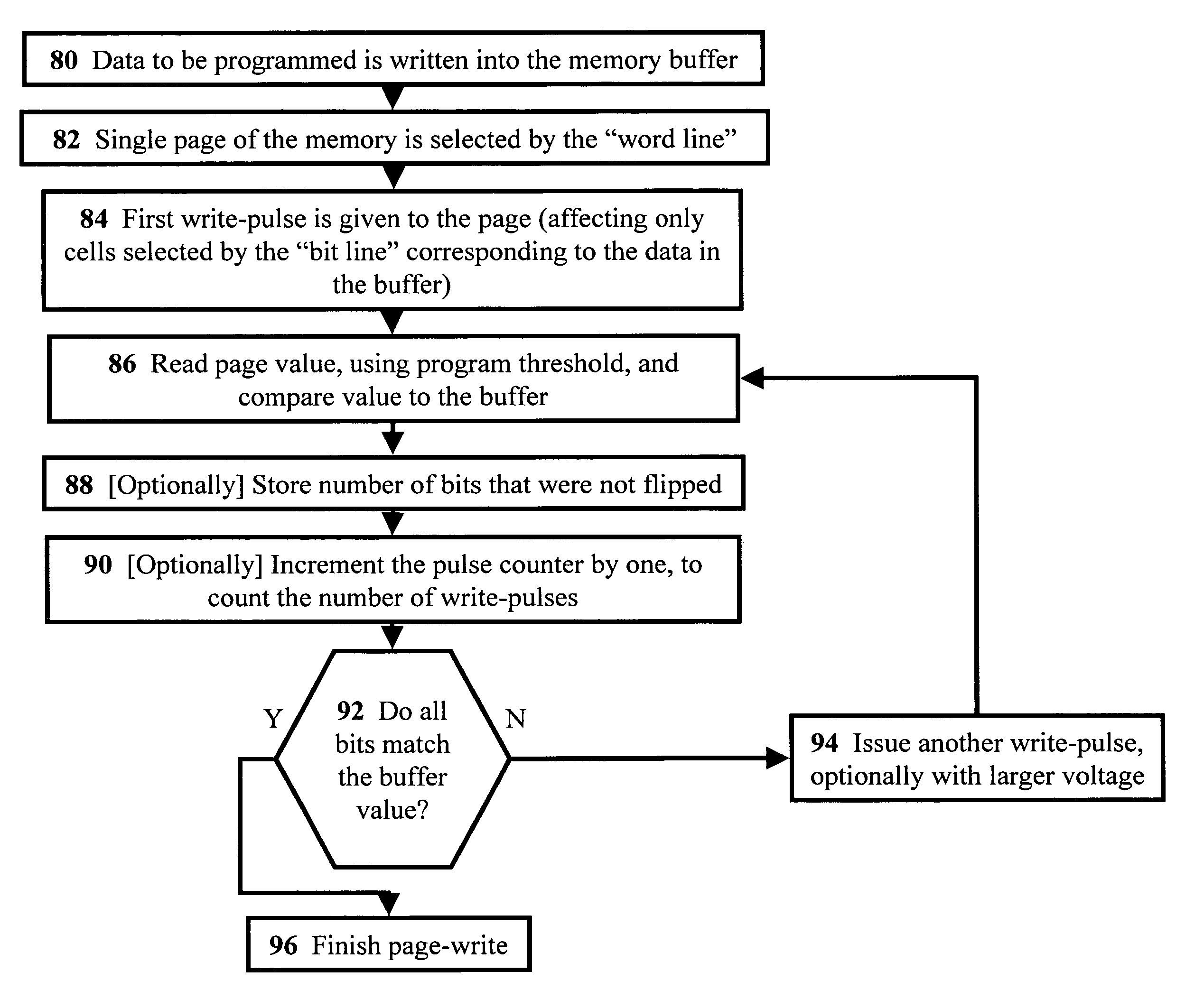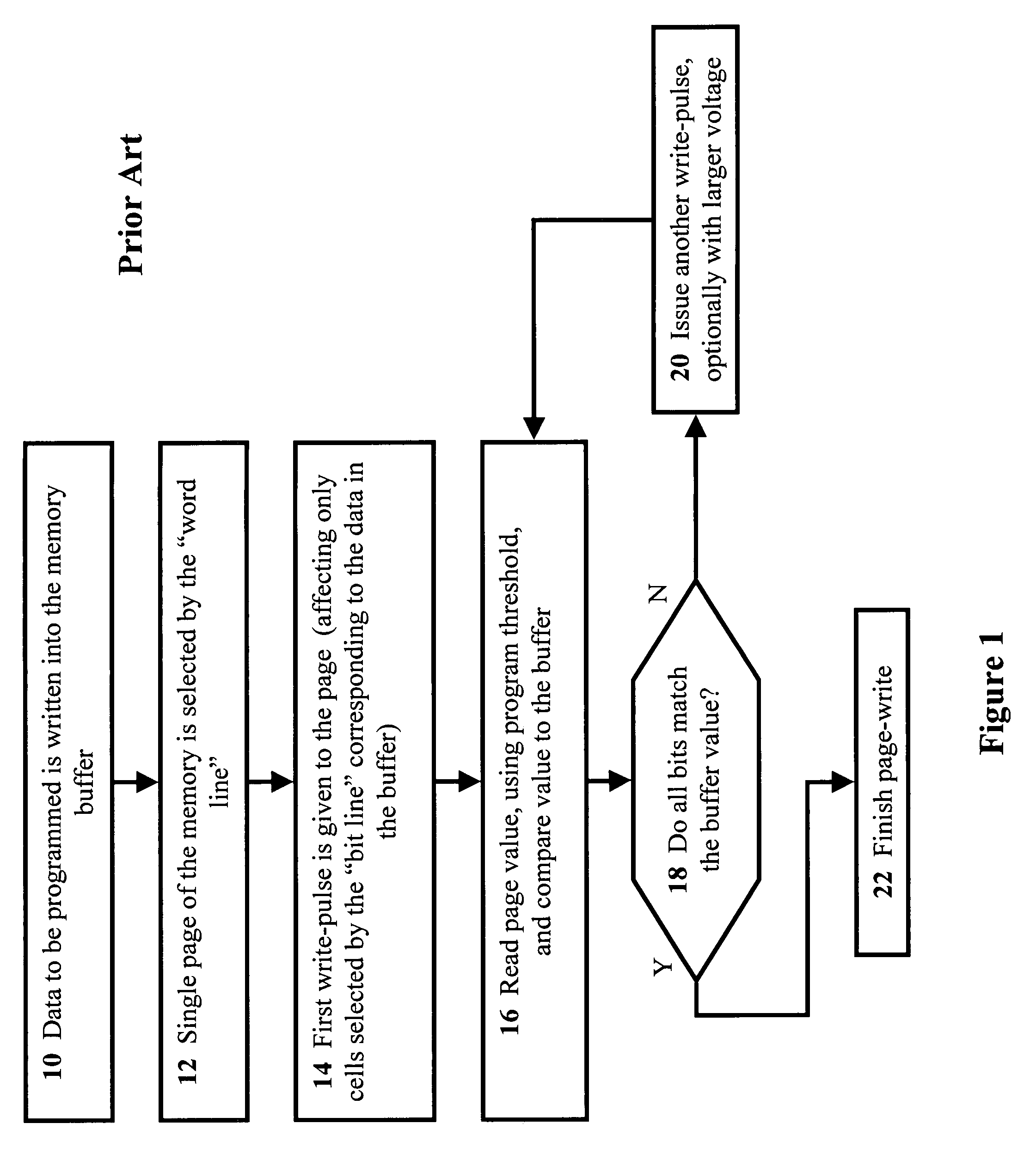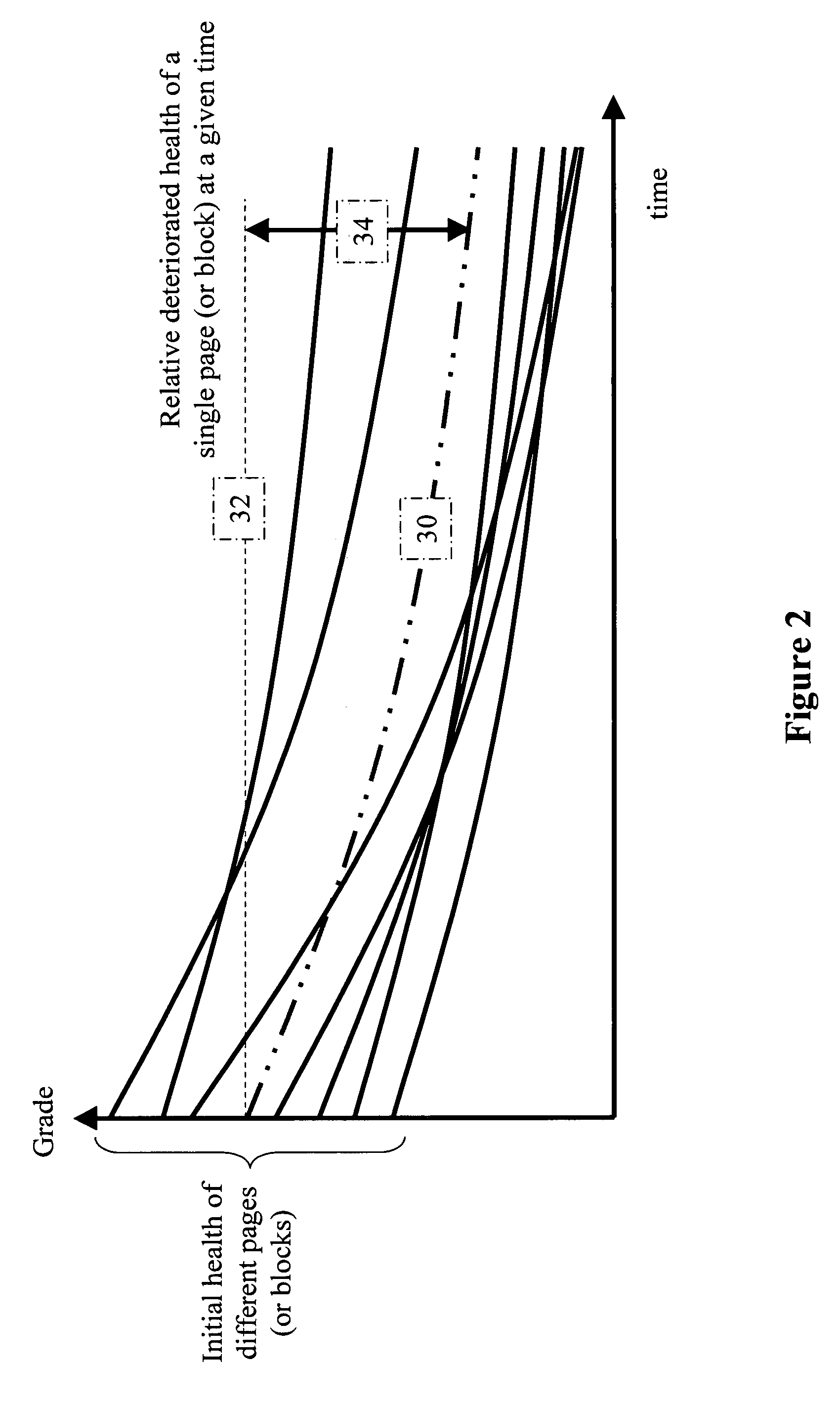Method for estimating and reporting the life expectancy of flash-disk memory
a technology of flash memory and life expectancy, which is applied in the direction of memory address formation, memory allocation/allocation/relocation, instruments, etc., can solve the problems of information not being repaired, information loss, and information loss, so as to reduce the risk of information loss, improve life expectancy, and reduce the effect of life expectancy
- Summary
- Abstract
- Description
- Claims
- Application Information
AI Technical Summary
Benefits of technology
Problems solved by technology
Method used
Image
Examples
Embodiment Construction
[0064]The present invention relates to methods for built-in detection of the deterioration of reliability in digital memory devices. The principles and operation for built-in detection of the deterioration of reliability in digital memory devices, according to the present invention, may be better understood with reference to the accompanying description and the drawings.
[0065]Referring now to the drawings, FIG. 2 shows a qualitative graph of the degradation of the grade of a data page (or block) of a memory device as a function of time, according to a preferred embodiment of the present invention. As noted above, the grade may refer to a page or a block depending on the operation. The curves in FIG. 2 represent the respective grades of pages or blocks of a memory device. Consider one such curve 30. The initial health of the page / block of curve 30 is defined as the deviation of the initial grade of curve 30 (at t =0, i.e. at production / testing of the memory) from a reference grade va...
PUM
 Login to View More
Login to View More Abstract
Description
Claims
Application Information
 Login to View More
Login to View More - R&D
- Intellectual Property
- Life Sciences
- Materials
- Tech Scout
- Unparalleled Data Quality
- Higher Quality Content
- 60% Fewer Hallucinations
Browse by: Latest US Patents, China's latest patents, Technical Efficacy Thesaurus, Application Domain, Technology Topic, Popular Technical Reports.
© 2025 PatSnap. All rights reserved.Legal|Privacy policy|Modern Slavery Act Transparency Statement|Sitemap|About US| Contact US: help@patsnap.com



